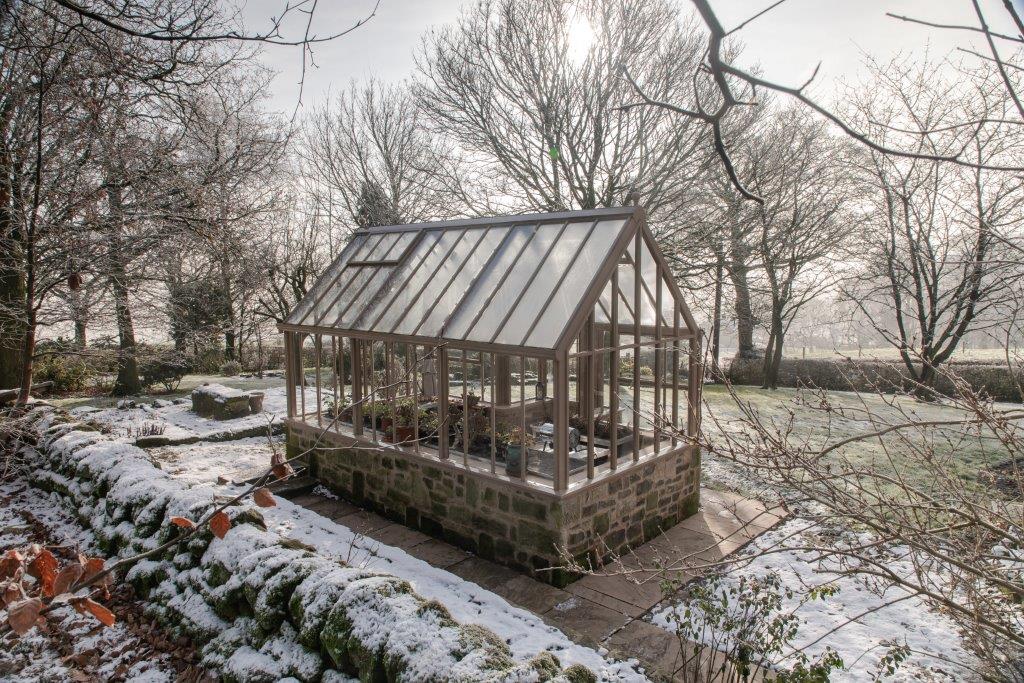
Damp, still air in the greenhouse causes grey mould, particularly on damp leaves or soft tissue like cyclamen flowers. It is less of a problem with good air circulation, so open greenhouse slightly vents on mild sunny days, shutting them before temperatures drop, early in the afternoon and avoid chilling draughts, (the lack of frost and cold winds so far this autumn, makes this of little a concern at the moment). If the weather turns cold, circulate the air within the greenhouse using a fan heater set at low speed. A frost-free greenhouse should be at a minimum night temperature of 5 – 7°C (42 – 45°F) and a maximum temperature of 13 – 16°C (55 – 60°F) during the day.
Most root balls are kept dry over winter but when plants need a little water, avoid wetting the leaves and water in the morning if possible, so any splashes have evaporated by nightfall.
Start off garlic in pots or modules in colder areas, on heavy, wet soils, where growing on ridges is not an option or where there is a short growing season. It needs 6 to 8 weeks at 0-10C to produce nice plump cloves next summer, so leave it outdoors to chill, then bring the pots into a cold greenhouse until next spring, water as it starts into growth as the days lengthen and transplant, after ‘hardening off’ when the soil dries out and outdoor growing conditions improve.
Keep an eye out for over-wintering aphids, whitefly, red spider mite and other pests, including errant slugs hiding under pots and control them immediately. If you use greenhouse smokes, follow the instructions carefully.
Continue successional sowing of salad leaves, warming the trays of compost in a heated propagator beforehand to hasten germination. Remove fallen leaves and debris from around your plants; add healthy material to the compost heap and diseased material to the council recycling bin.
Wash your pots and seed trays in soapy water, drying and stacking according to size so they are clean and ready for next year. Soaking them beforehand makes cleaning easier. Use soapy water, with a little environmentally friendly disinfectant, then rinse thoroughly. Clean plastic labels with water and a soft cloth, use a slightly abrasive cleaner like Cif to remove the writing, then rinse in clean water and dry.
Sowing onions is traditionally a job for Christmas Day or Boxing Day (although that might be a traditional ruse to avoid the washing up or yet more Christmas pudding). Lightly sow onion seed in trays or modules of moist peat free seed compost, then lightly cover with fine grade vermiculite and put the tray in a propagator at 10-16°C (50-60°F). Onions grown from seed are less prone to ‘bolting’ than those grown from sets. Sow five to six seeds per module, then thin out to three or four plants or in trays and transplant. When multi-seeded modules are planted out, the onions form clumps like shallots. (Leeks, round beetroot and carrots can be sown this way, too). ‘Harden off’ carefully before planting outdoors in later March or early April.
Happy Christmas, happy greenhouse gardening and stay safe. Matt


